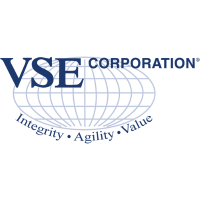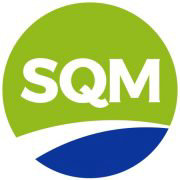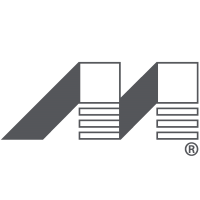
VSE Corp
NASDAQ:VSEC


| US |

|
Salesforce Inc
NYSE:CRM
|
Technology
|
| CL |

|
Sociedad Quimica y Minera de Chile SA
NYSE:SQM
|
Chemicals
|
| US |

|
UnitedHealth Group Inc
NYSE:UNH
|
Health Care
|
| US |

|
Centene Corp
NYSE:CNC
|
Health Care
|
| US |

|
Charles River Laboratories International Inc
NYSE:CRL
|
Life Sciences Tools & Services
|
| US |

|
Autozone Inc
NYSE:AZO
|
Retail
|
| US |

|
ServiceNow Inc
NYSE:NOW
|
Technology
|
| US |

|
Valero Energy Corp
NYSE:VLO
|
Energy
|
| US |

|
Palantir Technologies Inc
NYSE:PLTR
|
Technology
|
| US |

|
Mosaic Co
NYSE:MOS
|
Chemicals
|
| US |

|
Roblox Corp
NYSE:RBLX
|
Media
|
| US |

|
Quanta Services Inc
NYSE:PWR
|
Construction
|
| US |

|
Albemarle Corp
NYSE:ALB
|
Chemicals
|
| US |

|
Crocs Inc
NASDAQ:CROX
|
Textiles, Apparel & Luxury Goods
|
| US |

|
Fortinet Inc
NASDAQ:FTNT
|
Technology
|
| US |

|
Starbucks Corp
NASDAQ:SBUX
|
Hotels, Restaurants & Leisure
|
Utilize notes to systematically review your investment decisions. By reflecting on past outcomes, you can discern effective strategies and identify those that underperformed. This continuous feedback loop enables you to adapt and refine your approach, optimizing for future success.
Each note serves as a learning point, offering insights into your decision-making processes. Over time, you'll accumulate a personalized database of knowledge, enhancing your ability to make informed decisions quickly and effectively.
With a comprehensive record of your investment history at your fingertips, you can compare current opportunities against past experiences. This not only bolsters your confidence but also ensures that each decision is grounded in a well-documented rationale.
Do you really want to delete this note?
This action cannot be undone.

| 52 Week Range |
57.61
121.36
|
| Price Target |
|
We'll email you a reminder when the closing price reaches USD.
Choose the stock you wish to monitor with a price alert.

|
Salesforce Inc
NYSE:CRM
|
US |

|
Sociedad Quimica y Minera de Chile SA
NYSE:SQM
|
CL |

|
UnitedHealth Group Inc
NYSE:UNH
|
US |

|
Centene Corp
NYSE:CNC
|
US |

|
Charles River Laboratories International Inc
NYSE:CRL
|
US |

|
Autozone Inc
NYSE:AZO
|
US |

|
ServiceNow Inc
NYSE:NOW
|
US |

|
Valero Energy Corp
NYSE:VLO
|
US |

|
Palantir Technologies Inc
NYSE:PLTR
|
US |

|
Mosaic Co
NYSE:MOS
|
US |

|
Roblox Corp
NYSE:RBLX
|
US |

|
Quanta Services Inc
NYSE:PWR
|
US |

|
Albemarle Corp
NYSE:ALB
|
US |

|
Crocs Inc
NASDAQ:CROX
|
US |

|
Fortinet Inc
NASDAQ:FTNT
|
US |

|
Starbucks Corp
NASDAQ:SBUX
|
US |
This alert will be permanently deleted.
 VSE Corp
VSE Corp
Earnings Call Analysis
 Q3-2023 Analysis
VSE Corp
Q3-2023 Analysis
VSE Corp
This quarter demonstrated remarkable strength in the Aviation segment with a remarkable 48% increase in revenue. This was attributed to effective program execution, market share gains, the expansion of the product range and repair capabilities, and favorable end market conditions. Specifically, impressive growth was seen in Aviation distribution revenue by 46% and Aviation MRO (Maintenance, Repair, and Overhaul) by a stunning 54%. The Fleet segment likewise saw solid gains with a 22% surge in revenue, driven by increased demand across all sales channels including a new e-commerce business and expanded services for the U.S. Postal Service.
The strong financials were further bolstered by strategic moves including the acquisition of Desser Aerospace and a new agreement with Honeywell, which positions the company as the exclusive manufacturer and MRO provider for over 340 unique fuel control systems. However, there was a setback with the termination of the Federal and Defense segment's sale which is now back on the market.
The third quarter showed an impressive 38% jump in revenue, with net income and adjusted EBITDA skyrocketing by 57% and 56% respectively. The Aviation segment in particular celebrated its fourth consecutive record quarter, surpassing $150 million in revenue with a year-over-year increase of 48%. This segment's adjusted EBITDA soared by 87%, translating to an adjusted EBITDA margin increase of approximately 340 basis points.
Looking forward, Aviation's full-year 2023 revenue growth guidance was hiked to 30-35%, with adjusted EBITDA margins expected to hit the upper range of the 14-16% guidance. The Honeywell Agreement, while not affecting fourth-quarter revenue much, is forecasted to yield $7 million to $14 million of EBITDA in 2024 and 2025. The Fleet segment is expected to enjoy a 20-25% growth in revenue, with adjusted EBITDA margins estimated to be between 11-13% for the full year of 2023.
The company displayed prudent financial management with $89 million in cash and availability under a $350 million credit facility at the quarter's end. They also generated $15 million in operating cash flow and $11 million in free cash flow. The net leverage ratio, inclusive of trailing 12-month acquisitions, was 3.7x but is projected to slide below 3.5x by the fourth quarter's close.
The outlook for the fourth quarter is positive with expectations of improved free cash flow over the third quarter. This optimism stems from earlier investments in working capital beginning to pay off.






 You don't have any saved screeners yet
You don't have any saved screeners yet

Good morning, and welcome to the VSE Corporation Third Quarter 2023 Results Conference Call. [Operator Instructions] Please note, this event is being recorded. I would now like to turn the conference over to Mr. Michael Perlman, VP of Investor Relations and Communications. Please go ahead.
Thank you. Welcome to VSE Corporation's Third Quarter 2023 Results Conference Call. Leading the call today are John Cuomo, President and CEO; and Steve Griffin, Chief Financial Officer. The presentation we are sharing today is on our website, and we encourage you to follow along accordingly.
Today's discussion contains forward-looking statements about the future business and financial expectations. Actual results may differ significantly from those projected in today's forward-looking statements due to various risks and uncertainties, including those described in our periodic reports filed with the SEC. Except as required by law, we undertake no obligation to update our forward-looking statements.
We are using non-GAAP financial measures in our presentation. Where available, the GAAP financial reconciliations are incorporated into our presentation, which is posted on our website. All percentages in today's discussion refer to year-over-year progress, except where noted. As a reminder, the Federal & Defense business segment has been excluded from our results and has been moved to discontinued operations as we pursue the divestiture of the business.
We also look forward to welcoming you all to our first Investor Day scheduled for November 14, 2023, in New York City at NASDAQ MarketSite and broadcast virtually. You can register for the event on our IR website at ir.vsecorp.com. Please feel free to contact me directly with any questions.
At the conclusion of our prepared remarks, we will open the line for questions. With that, I'd like to turn the call over to John.
Thank you, Michael. Good morning, everyone, and welcome. Thanks for joining our call today.
Let's begin with Slide 3, where I will provide an update on the performance of our business segments.
Third quarter 2023 results were highlighted by record revenue and financial performance in our Aviation segment, strong revenue growth in our Fleet segment, and the closing of both the Desser acquisition and a transformational asset and intellectual property license agreement with Honeywell.
Aviation segment revenue increased 48% in the quarter. This strong performance was driven by strong program execution, market share gains, the expansion of our products and repair capabilities and positive end market activity. We continue to experience great success from our Aviation segment's organic and inorganic investment. Aviation distribution revenue growth of 46% was driven by strong program execution on new and existing distribution awards, the entrance into new markets and an expansion of product offerings, along with improved pricing and product mix. Aviation MRO revenue growth of 54% was driven by strong end market activity, market share gains and expansion of repair capabilities and contributions from new customers.
The Fleet segment experienced solid revenue growth across all channels, with 22% total revenue growth in the quarter. Our Fleet segment revenue and profit dollar contribution improved year-over-year. The Fleet segment sales increase was led by revenue contributions from our new Memphis, Tennessee distribution facility as we continue to ramp our new e-commerce fulfillment business. The increase in USPS revenue in the quarter was supported by an expansion of the installed base of their vehicles and continued maintenance investments in both legacy and new vehicles.
Let's now move to Slide 4, where I will provide a strategic update. First, on July 3, we acquired Desser Aerospace, a global aftermarket solutions provider of specialty distribution and MRO services. Desser Aerospace is a leading independent distributor of aircraft tires and tubes, a global distributor of brakes and batteries and a component MRO services provider for wheel and brake repair. The acquisition supports our tip-to-tail aircraft distribution and MRO services strategy and provides VSE Aviation with increased access to the highly-fragmented Aviation aftermarket.
Having Desser within the VSE Aviation portfolio of assets has already begun to deliver sales synergy benefits. We have begun the integration of Desser starting with the U.S. operations, which is expected to be completed by the second quarter of 2024. As a reminder, integration means full system, process and organizational integration into the VSE system with the goal of reducing cost, improving productivity and providing our customers and suppliers with a one-company, seamless approach to the market.
Second, we announced that we entered into a transformational purchase and perpetual license agreement with Honeywell that will allow us to exclusively manufacture, sell, distribute and repair over 340 unique fuel control systems on 4 engine platforms, including 3 platforms that are still in production. This new agreement expands VSE Aviation's existing capabilities, supporting these Honeywell fuel control systems and associated subcomponents. Since 2015, VSE Aviation has served as the exclusive distributor of these products. In addition, VSE Aviation has a long established and successful history as an MRO provider to support these fuel control systems. Through this new agreement, VSE expands the relationship to become the licensed manufacturer with perpetual rights to the intellectual property of these components.
We are very excited about this announcement and what it represents for VSE Aviation. The announcement not only allows us to significantly strengthen our current and long-term relationship with Honeywell, the engine manufacturers and the aftermarket users, but it's also a testament to the differentiated OEM-centric value proposition, which continues to resonate with suppliers and provides us additional opportunities to add value through the supply chain. In addition, this adds a high-margin revenue channel and partnership opportunity to our Aviation portfolio. We will share more details about this program during our November 14 Investor Day.
Finally, last month, we announced a mutual agreement to terminate the sale of the Federal and Defense segment to Bernhard Capital Partners. While we were disappointed with this outcome, we remain very focused on the near-term divestiture, and we are moving quickly towards the sale of these assets. We have relaunched the process and expect to provide a more detailed update early in the first quarter of 2024. In the interim, the FDS business will remain in discontinued operations as we pursue divestiture opportunities for this business.
Let's now move to Slide 5. VSE delivered solid and well-rounded third quarter results, highlighted by a 38% increase in revenue, a 57% increase in net income and a 56% increase in adjusted EBITDA compared to the prior year. Our Aviation segment posted its fourth record quarter in a row, with revenues of $152 million, a 48% increase year-over-year and our first quarter over $150 million. Driving the record revenue was balanced growth across both commercial and business and general aviation customers, increased activity through both our distribution and MRO sales channels and the addition of Desser Aerospace.
Adjusted EBITDA for the Aviation segment of $25 million increased by 87% versus the prior year, yet another record for this business segment. Aviation segment adjusted EBITDA margin increased by approximately 340 basis points year-over-year to 16.6%. The Aviation segment adjusted EBITDA represented 78% of total company's third quarter adjusted EBITDA versus 65% last year.
Our Fleet segment also reported strong revenue growth in the third quarter on a year-over-year basis, increasing 22% to $79 million, driving growth across all active sales channels. Fleet segment adjusted EBITDA dollars increased by 5%, driven by strong commercial sales growth and solid contributions from the U.S. Postal Service program.
We are proud and thankful for our VSE teams and a strong commitment to our customer and supplier-focused value. I'm pleased to see that this work translated to a record financial performance in the quarter.
I will now turn the call over to Steve for a detailed review of our third quarter financial performance.
Thanks, John. As a reminder, our results exclude the Federal and Defense segment, which remains in discontinued operations as it is held for sale.
I'll now turn to Slide 6 and 7 of the conference call materials to provide an overview of our third quarter performance.
As John mentioned, we reported record revenue in our Aviation segment and strong year-over-year performance within our Fleet segment. Our results across both segments were driven by strong program execution, expanded capabilities and offerings, market share gains and robust demand across all end markets. We generated $231 million in revenue in the third quarter, an increase of 38% versus the prior year period. Aviation reported another record quarter driven by strong program execution of new and existing distribution awards and expansion of product offerings and repair capabilities, increased commercial and business and general aviation MRO activity, strengthened customer and supplier relationships, all of which have led to market share gains and new profitable revenue opportunities. And lastly, contributions from the recent Desser Aerospace acquisition.
Fleet segment growth was driven by solid e-commerce fulfillment and commercial fleet sales, together with higher contributions from the USPS program. We generated $32 million of adjusted EBITDA and $14 million of adjusted net income, an increase of 56% and 75%, respectively. Adjusted EBITDA increased $11.5 million, driven by an $11.7 million contribution from Aviation and a $500,000 contribution from Fleet, partially offset by the GAAP accounting impact on corporate expenses from discontinued operations.
Now turning to Slide 8, we'll cover our Aviation segment results. Revenue increased 48% versus the third quarter last year to a record $152 million. Both distribution and MRO businesses were strong contributors, up 46% and 54%, respectively. Aviation grew 24% excluding the Desser acquisition, driven by strong execution of recent investments and growth initiatives and strong end markets.
Distribution revenue growth was driven by strong execution of existing OEM programs, expansion into new markets, improved pricing and customer mix and contributions from Desser. MRO continues to benefit from higher commercial flight activity and expanded portfolio of repair services and capabilities, improved productivity and the addition of our Desser Aerospace acquisition.
Aviation adjusted EBITDA increased by 87% in the quarter to $25 million, while adjusted EBITDA margins increased 340 basis points to 16.6%. The improvement in profitability was driven by contributions from new programs, robust MRO revenue growth, operating leverage and progress on margin improvement initiatives. Additionally, we were pleased with the results of the Desser business as it exceeded our initial third quarter expectations.
Within our Aviation segment, we recently increased our full year 2023 revenue growth guidance range to 30% to 35% to account for our strong third quarter results and the addition of Desser. We initially estimated that Desser would contribute approximately $35 million of revenue to our second half results. While we are on track to exceed our initial expectations, we do expect slightly softer fourth quarter Desser revenue as compared to the third quarter due to seasonality within their business.
We expect our full year adjusted EBITDA margin to be towards the higher end of our previously-provided range of 14% to 16% as strong year-to-date margins are modestly offset by fourth quarter investments, including standing up the supply chain for our newly-acquired Honeywell fuel control systems business and the expansion of our operating footprint throughout Europe.
Regarding the recent Honeywell Fuel Controls announcement, we do not anticipate any material revenue impact in the fourth quarter. However, we do anticipate higher sequential operating expenses, interest expense and amortization as we establish manufacturing capabilities to support the program. In 2024 and in 2025, we anticipate $7 million and $14 million of EBITDA contribution from the program respectively, improving ratably throughout each year as we realized the lower cost of inventory purchases. We also expect to realize $10 million in lower net working capital by the end of 2024.
Now turning to Slide 9. Fleet segment revenue increased 22% to $79 million, driven by strong growth in e-commerce fulfillment and commercial fleet sales along with increased USPS demand to support their growing fleet. Total commercial revenue was $37 million in the quarter, an increase of 47% versus the prior year period and now represents 47% of total Fleet segment revenue, an approximate 800 basis point increase over the same period in the prior year.
Commercial revenue growth remains on track with our initial expectations as we launch our new Memphis distribution facility, as we continue to scale our infrastructure and workforce to meet the robust end market demand. Commercial revenue. While we see strong growth year-over-year, commercial revenue declined modestly on a sequential quarterly basis, driven by what we believe to be a temporary market -- supply chain disruptions. We continue to launch the Memphis distribution facility as we navigate this new market. We remain confident in our ability to continue to grow the business.
U.S. Postal Service revenue was up approximately 6% versus the third quarter of last year, which is included within our Other Government channel. Our best-in-class customer service and supply chain management program allows us to continue to maintain market share on all legacy USPS platforms while we service newly-introduced vehicles.
Segment adjusted EBITDA increased 5% to $9 million, driven by increased sales volume. Adjusted EBITDA margin was down 190 basis points to 11.6%, driven by the mix of commercial customers. For the full year 2023, we expect revenue growth of 20% to 25% year-over-year and adjusted EBITDA margin in the range of 11% to 13%. We continue to focus on driving year-over-year profit growth for the segment as we drive to scale our recently-launched distribution facility to reach its full potential.
Turning to Slide 10. At the end of the third quarter, we had $89 million in cash and unused commitment availability under our $350 million credit facility. For the quarter, we generated $15 million of operating cash flow and $11 million of free cash flow, driven by disciplined cash management and strong operating results. At the end of the quarter, we had total net debt outstanding of $440 million. We currently have $250 million of outstanding interest rate swaps, following the execution of a $100 million swap in July, concurrent with the Desser acquisition.
Pro forma net leverage, which includes the trailing 12-month results from our prior acquisitions, was 3.7x at the end of the third quarter. We expect our pro forma net leverage ratio to be below 3.5x by the end of the fourth quarter, driven by growth in trailing 12 months of adjusted EBITDA and positive free cash flow in the fourth quarter. We expect fourth quarter free cash flow to improve sequentially as compared to the third quarter, as we continue to realize returns on working capital investments from earlier in 2023.
With that, I will now turn the call back over to John for his final remarks.
Thank you, Steve.
I would like to conclude our prepared remarks by reviewing the opportunities ahead and priorities for our business. Our focus remains on driving sustainable, profitable growth while enhancing the operational performance of our 2 business segments.
Please advance to Slide 11. First, continue to pursue the near-term sale of the Federal and Defense business. As I stated earlier, we remain confident in our ability to monetize these assets and will work towards an expedited sale of this business. We expect to provide an update in the coming months.
Second, transition and implement our newly-acquired Honeywell Fuel Controls product line and associated subcomponents program.
Third, complete the integration of our Precision Fuel MRO acquisition, which will happen this quarter, and continue the integration of our Desser Aerospace acquisition. We remain focused on our model to fully integrate all acquired assets into our systems, processes and organizational structure in order to provide our customers with a single source for our products and services and drive synergies and greater combined value and investment returns for our shareholders.
Fourth, continue to expand our full-service unique product distribution and MRO repair capabilities within high-growth, underserved portions of the Aviation aftermarket. We remain focused on offering a bespoke solutions-oriented approach that addresses our customer needs. We look forward to sharing more about growth opportunities and 2024 pipeline in the coming weeks.
Fifth, drive commercial growth while supporting legacy programs within our Fleet business. This includes scaling and growing revenue and improving profitability at our Memphis distribution and e-commerce fulfillment center to address robust and commercial fleet customer demand.
And finally, deliver accelerated free cash flow, specifically in the fourth quarter, driven by disciplined cash management and strong operating results.
I'm very proud of our third quarter operating performance and the tremendous progress we have made year-to-date to advance both our Aviation and Fleet business strategies. I'm very thankful to our teams and the results that they have been able to deliver. The culture and teams at VSE continues to be our greatest asset and our greatest differentiator. I look forward to sharing what's ahead for VSE at our November Investor Day in less than 2 weeks.
Operator, we are now ready for the question-and-answer portion of our call.
[Operator Instructions] The first question comes from Louie DiPalma with William Blair.
The Aviation aftermarket remained very strong. It appears that there's really robust industry growth and you've also gained share. But as we look to the fourth quarter, how should we think about seasonality relative to the third quarter?
Yes. I think I mentioned it in my prepared remarks, Louie, but obviously, we're extremely pleased with the results of the Aviation business in the third quarter. When we look towards the fourth quarter, there is an element of seasonality, so a little bit lighter on revenue is what we would anticipate, and probably some of that mostly coming from the most recent Desser acquisition. I referenced that it's above our expectations as we initially set out for, but it will have a seasonality effect.
I think when we look for the full year, we're very pleased with the contributions for the Aviation business. We've increased our revenue guidance range now for the full year, 30% to 35%, and we look forward to talking more about '24 and beyond when we get to the Investor Day. But very, very pleased with the results thus far.
Steven. Sorry that I missed that.
For the Federal and Defense segment, despite some of it struggles, it still seems as though it has some attractive assets with the Energetics Consulting business, and you also have a $565 million in C5 aircraft IDIQ. Have you seen interest to buy these assets on a stand-alone basis as opposed to potential acquirers for the whole business?
Yes, Louie. So the way you're looking at it, exactly correct. So we're obviously looking for the most expedited process that's possible that can monetize the asset with the highest value. That could include selling the segment in totality or selling pieces or contracts independently, and we are pursuing both paths simultaneously.
Great. And one final question. Earlier this year, you expanded your Pratt & Whitney Canada partnership into Asia, and it appears that the execution for that geographic expansion has been going well. Are there opportunities for you with your other OEM partners in Asia and other geographies?
There are. We hope to be in a position to share a little bit more detail about that at our Investor Day coming up. We're really focused on Europe for 2024 with the acquisition of Desser, which gives us a strong solid team in Europe, but that team is very U.K.-centric. We have plans to expand outside of the U.K. and both leveraging the Desser business and some of our OEM partnerships to do so, and we'll be in a position to share some more detail about that at the Investor Day.
The next question comes from Michael Ciarmoli with Truist.
Just to close the loop on that -- on Fed and trying to sell that. I mean, do you guys have to realistically lower your expectations in terms of what you think the assets could fetch now? I know it was kind of with that earnout, $100 million. I mean, are you just trying to do this as quick as possible? And obviously, you're still trying to monetize it in the most efficient fashion and get the most value, but do you think you've got to lower your expectations for sale price?
We are very focused on -- we believe we can manage both value and time. I think it's important to highlight that the majority of the earn-out was associated with one contract, which we were not successful with. We are under protest at this time. So if you look at the $50 million base purchase price, we're very focused on the core asset at that value and doing our best to manage both, getting to that value as well as doing it in the most expedited time line possible. We had anticipated a first quarter closing, so we're very focused on what can we do within the same time period.
Got it. Got it. Okay. That's helpful.
And then just on Aviation, obviously, very strong, strong demand backdrop there. Just -- can you help me reconcile it? I think, Steve, you called out the organic growth, maybe 24% ex Desser, I don't know if I have the math correct, but that seemingly implies maybe a $25 million contribution. Do I have that right? And I know you said $35 million for the year, but I didn't know if there was anything else sort of incorporated in that organic.
You have the math correct. And so it does contribute $25 million in the quarter, and that's why I referenced that the business is performing better than expectations for the second half of the year. .
But to be super candid with you, as we get to know the business better and work with the teams more, I referenced the seasonality effect. Their third quarter does tend to be quite strong given the flight dynamics in the Europe region specifically, which is where they've got a large business. And we expect to see some level of decline there headed into the fourth quarter, hence the commentary. But yes, we're very pleased with the business's performance thus far and excited about working through the integration efforts.
Got it.
Can you help us out? I know you called out the distribution of 46% and MRO of 54%. What -- can you parse out maybe the organic growth rates on those 2 lines?
Yes, I'm happy to. The distribution side of the business is up 23% on an organic basis, and the repair business is up 26% on an organic basis. Repair tends to still kind of lead at this point. It's still driven a little bit by the commercial recovery dynamics. But I'd say, in both sides, distribution and repair, we still continue to see better than overall market results from an organic basis, so we're pleased.
Got it.
And then I think you called out pricing as well. I mean we've heard from some other suppliers out there, they've gotten double-digit last year, high single this year. Can you maybe talk to what you're seeing on pricing maybe across both distribution and kind of MRO?
Yes. I think, Mike, so I'd say that obviously, 2023, we're not -- we're done, so what we have experienced is some results of some of the pricing efforts from the OEMs. We're starting to get the catalogs in now for 2024. My anticipation is that it's going to be a little bit more muted than we've seen in '23 and '22.
So we're just getting initial kind of data in. Ask me that question in 2 weeks at the -- at Investor Day, and I'll probably have more detail once we start going through the data. But I would anticipate 2024 price being less of an impact than we've seen in the last 2 years.
Okay. Got it.
Last one, then I'll get out of the way here. Any implications for you guys on the positive side, given what's going on with the GTF and obviously, airlines may be being forced to fly older equipment longer, not having enough lift? And I guess the same holds true for just where the MAX is, I mean, what -- are you guys seeing potential tailwinds there?
Yes. I'd say direct corollary, not a ton. Obviously, we don't support that program today. But I'd say to the second part of your question, will that lead to a longer life on some of these legacy assets and, therefore, more repair opportunities? We believe the answer is yes. And we continue to want to make sure that we're there to support our programs, whether it may be on the newer side or on the end of life side. So we're kind of trying to support all legs of the aircraft. And I think at this point, we continue to see robust demand.
I think when we get to the Investor Day, we'll share more about our outlook headed into '24 and '25, give you a sense of where we think the markets are headed. They're certainly going to slow down from a year-over-year comp perspective. Commercial at this point has seen such a strong '23, it will start to moderate. We're seeing that in our business even in the third quarter on a year-over-year comp basis.
The next question comes from Josh Sullivan with The Benchmark Company.
Just as far as the Honeywell IP acquisition, what does that ramp look like? You talked about expanding the supply chain. Is there a qualification time line or a hiring need that we should think about?
There is both actually, you're thinking about it the right way. So to say is this is a great entry for us into this market. We -- I highlighted that we both have been distributing the product and repairing the product. This is much more of an assembly than a pure manufacturing, so we're working with the supply base and essentially assembling the fuel controls. That's our portion of the manufacturing. So if you think about it in our repair business today, we disassemble it, and we reassemble it. So we've got tremendous experience, but we do need the FAA approvals from a manufacturing perspective. That takes weeks and months, not years. And then we have a very strong team who understands this product line, but obviously, we're increasing staffing around that.
The second thing I would add, because you see the revenue and earnings forecast that we had put out with the initial release and that Steve highlighted again today, is that we're sitting on legacy inventory. So we acquired inventory from Honeywell with, obviously, a Honeywell markup on it. We have to burn through that inventory, and then that margin capture that went to them now will come to us in the future. So as you look at the ramp, those are the steps to us getting to kind of the full ramp of both revenue and earnings potential on this program.
And then curious if the deal's driven any incoming from other aerospace OEMs looking at the transaction as attractive or is this still in the outgoing [indiscernible]?
Yes. What I would say is that -- and I'll highlight this more on the Investor Day. When you look at the life cycle of the product, you have, at some point in time, many times an OEM says, okay, this is still in production but it's a majority of the uses in the aftermarket. I want to use my R&D dollars and my shop floor space to focus on newer production products that they're looking for an alternative source for that production, and there are suppliers and companies in the industry that do this. I think we have pleasantly surprised the market with our ability to additionally support this. And this, coupled with our ability to distribute the product successfully and repair the products successfully, which is what our core business is, this really just adds an additional channel for us, and we are having dialogue with OEMs at this point.
What I would tell you though is don't expect -- and I don't normally give forecast on deals. Don't expect us to announce another deal like this in the coming months. We really want to make sure we do this right. This is the first time we're doing this, and we're going to do this right and really impress the market before we consider another transaction of this type. But there are definitely others out there for the future.
Got it.
And then maybe just switching over to Fleet, the expansion of the installed USPS Fleet. We've seen some large auto OEMs pull back on some EV development plans. How is the post office looking at its existing ice fleet at this point?
Yes. I think the numbers, the forecasts that have been previously shared, there doesn't appear to be any tremendous shift in that forecast so there will be a small portion of their fleet that will be EV. But the biggest thing that's happened is, number one, they've grown the fleet size, and that's a permanent growth to the fleet size.
The second thing is how they've grown that is not through the NGDV, the next-generation vehicle, whether electric or combustible engine. What they're doing is buying commercial off-the-shelf vehicles. So whether they're Mercedes Metris, whether they're some other types of commercial, off-the-shelf vehicles. So they're building a more complex fleet type that will continue to have a tremendous amount of non-EV type vehicles.
That said, our plan is to support all fleet types, and we look at the -- Postal Service is a really launch pilot customer to us in supporting EV medium-duty fleet vehicles. So continue to see strong activity there for the near term. And we don't have the real forecast yet of when that NGDV will be delivered. As we get that, we'll share any impacts we think that may have to the business.
[Operator Instructions] The next question comes from Jeff Van Sinderen with B. Riley.
Just wanted to follow up on the Memphis facility. Just wondering maybe if you can touch on incremental efficiencies to be realized there in the future?
Yes. Thanks, Jeff.
The way that we've built this this kind of model, remember, we started literally from 0 in January. We launched in the middle of the first quarter, completely new IT system, new facility, new infrastructure. So we're essentially, if you look at our chart, you're kind of increasing productivity and revenue out of the site, then we're plateauing and stabilizing, and then we're doing the same thing again, plateauing and stabilizing. So what you in the third quarter was really a more plateau period, and what you'll see in the fourth quarter is the next phase of kind of revenue ramp, and then again, plateau again. So as we go through that ramp, we continue to look at where we're going to have productivity improvements.
What is going to drive margin improvement over time? There's an element on supply chain on cost and pricing, but the other element is just: a, scale through that facility; and b, then we look at continuous improvement both in terms of processes. And really in late 2024, we'll talk about automation and the impacts that will make, but we've got to get the facility stabilized before we add the automation in. But you can expect this to be a continuous improvement in margin improvement plan over the next 2 years.
Okay. That's helpful.
And then I know you mentioned some seasonality at Desser for Q4. Just I guess anything else you're learning about Desser as you're integrating there?
I mean, as thrilled with the acquisitions, thrilled with the diligence that my team did, it's exactly as expected to see as far as they outperformed in the first quarter, a great culture, great level of alignment. It's a great addition to the VSE Aviation portfolio.
So their business wasn't fully integrated. So they were running the business under different IT platforms, so we basically are breaking it up into a number of smaller integrations. But integrations are on track or slightly ahead of pace, and very excited for what's ahead for 2024.
Thank you. This concludes our question-and-answer session. I would like to turn the conference back over to Mr. John Cuomo for any closing remarks. Over to you, sir.
Thank you, everybody, for joining our conference call today. We look forward to seeing many of you on November 14 in New York at our first Investor Day, and appreciate the continued support and interest in VSE. Have a great rest of your day.
Thank you.
The conference has now concluded. Thank you for attending today's presentation. You may now disconnect.